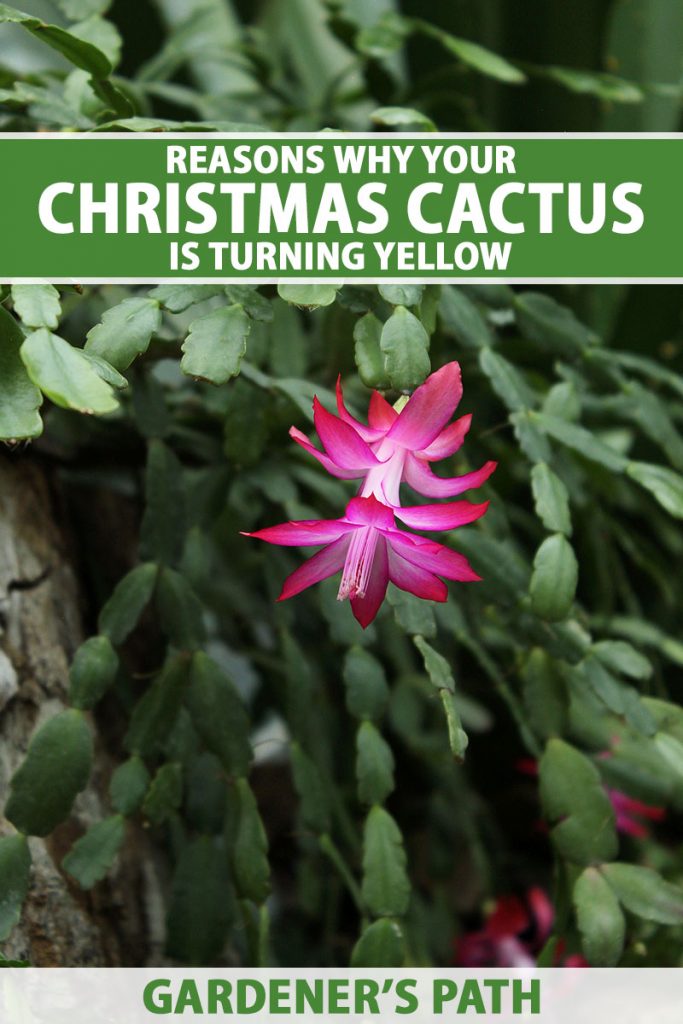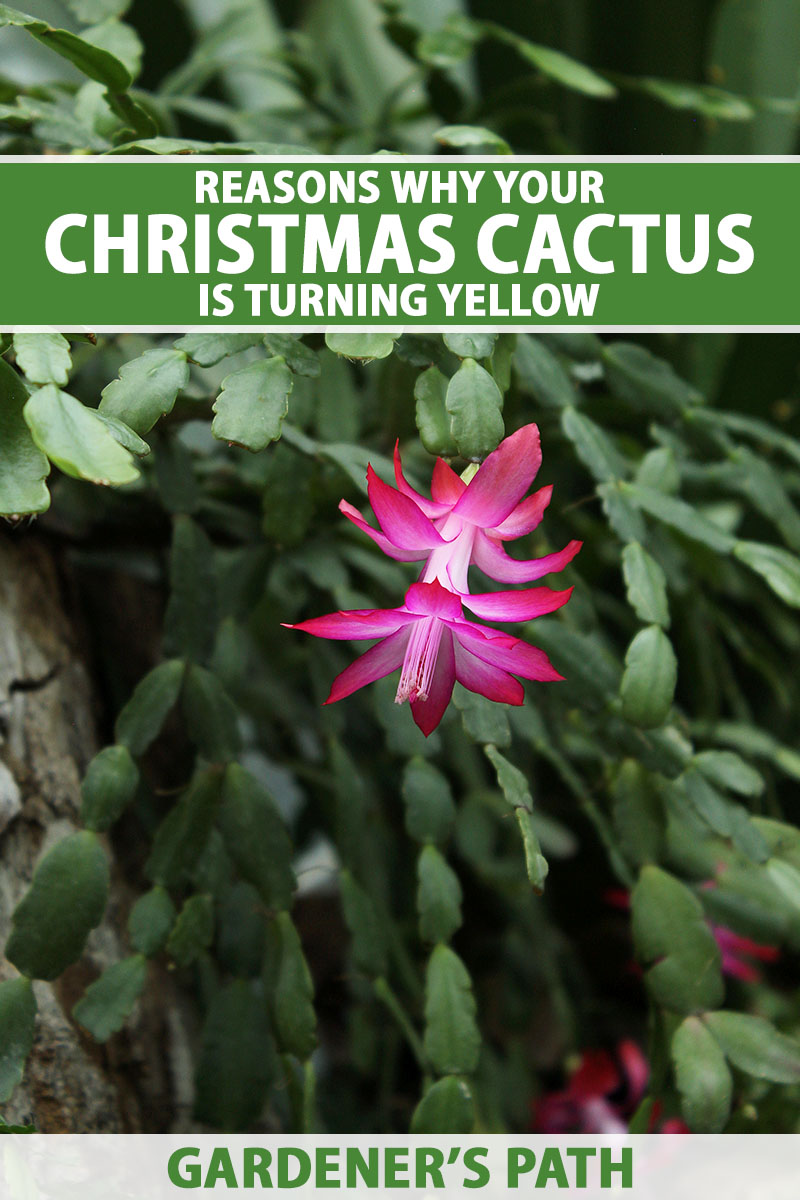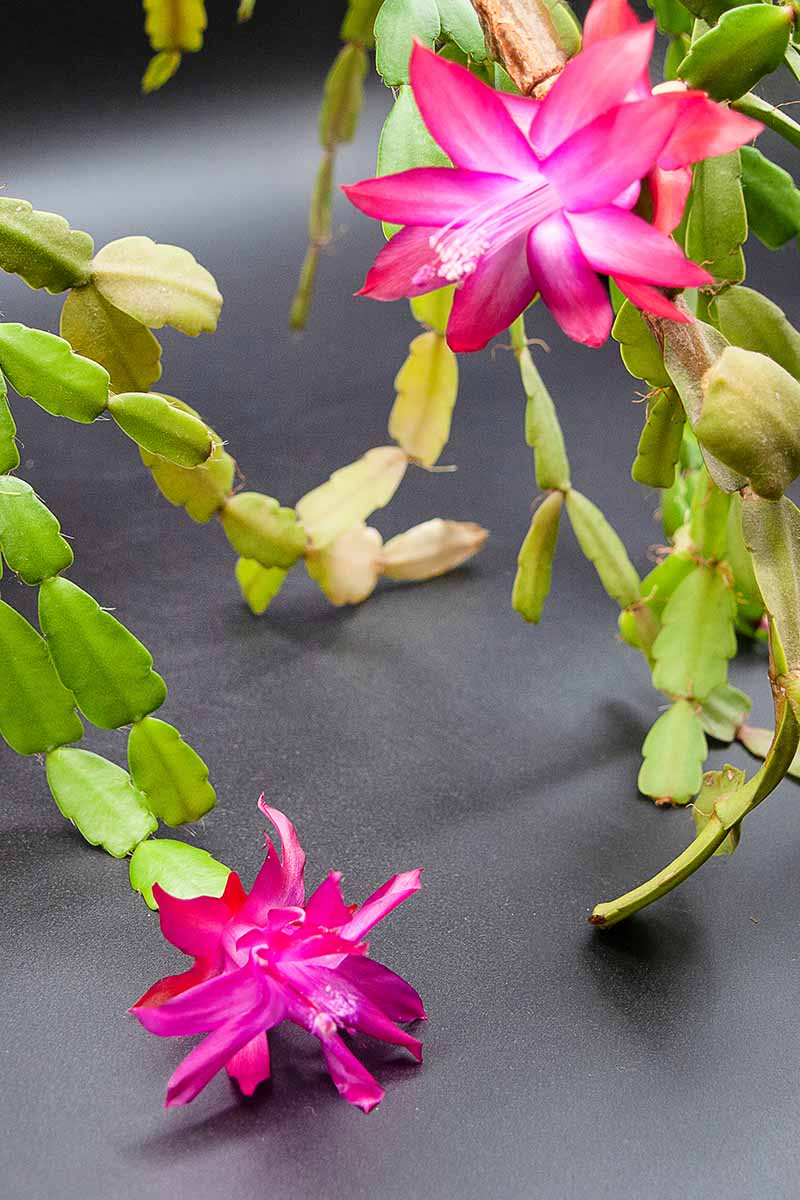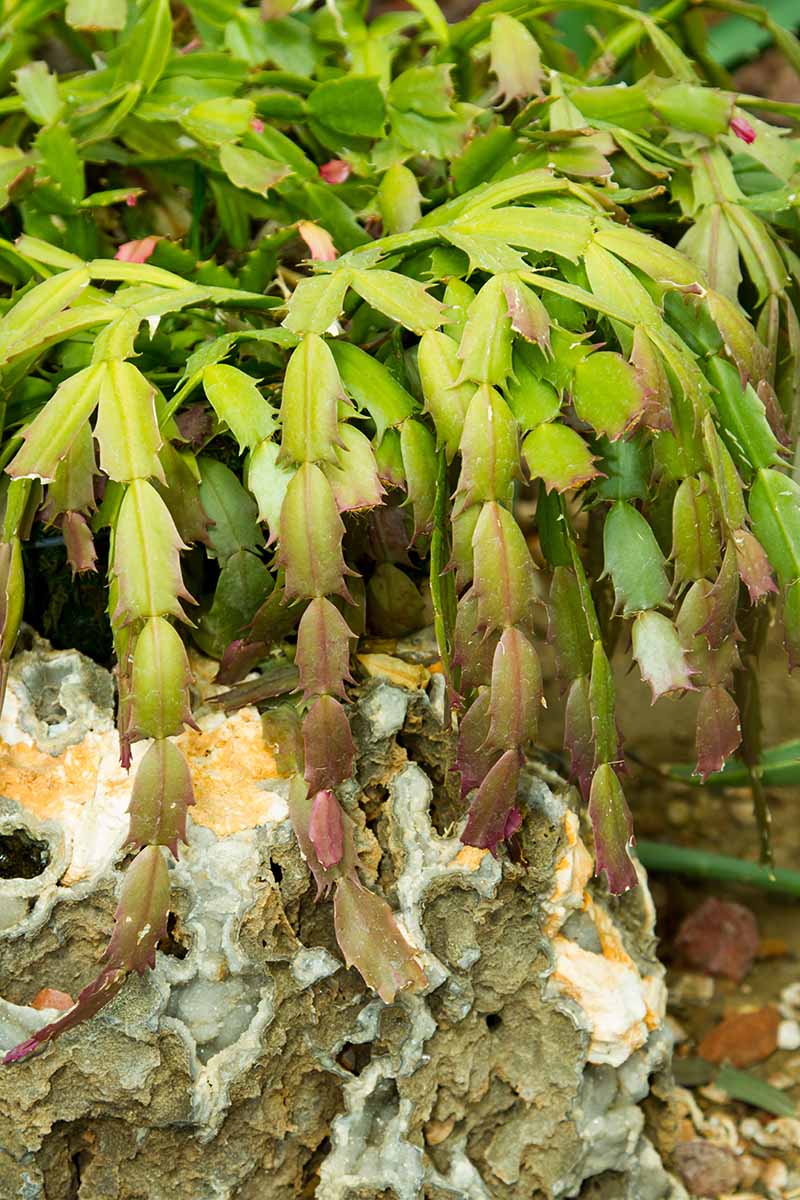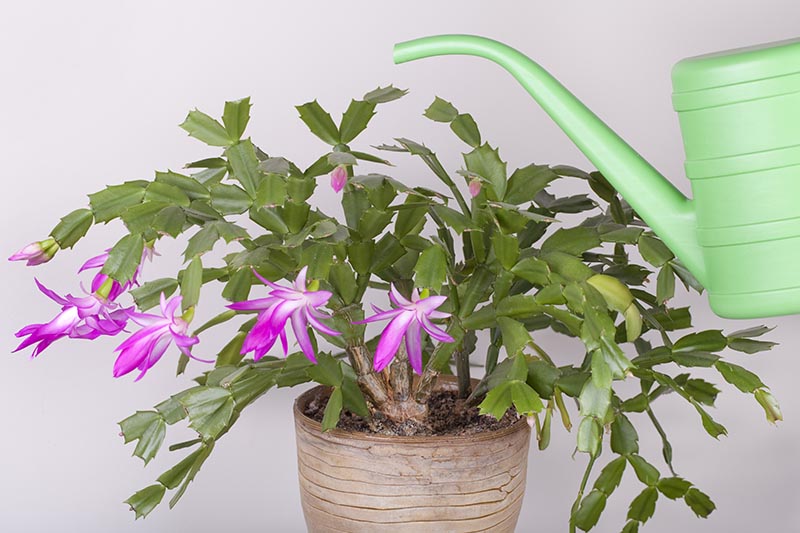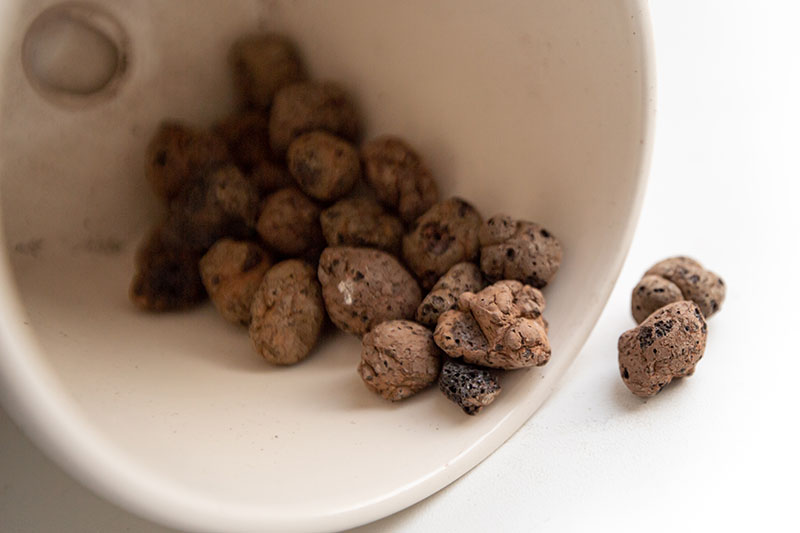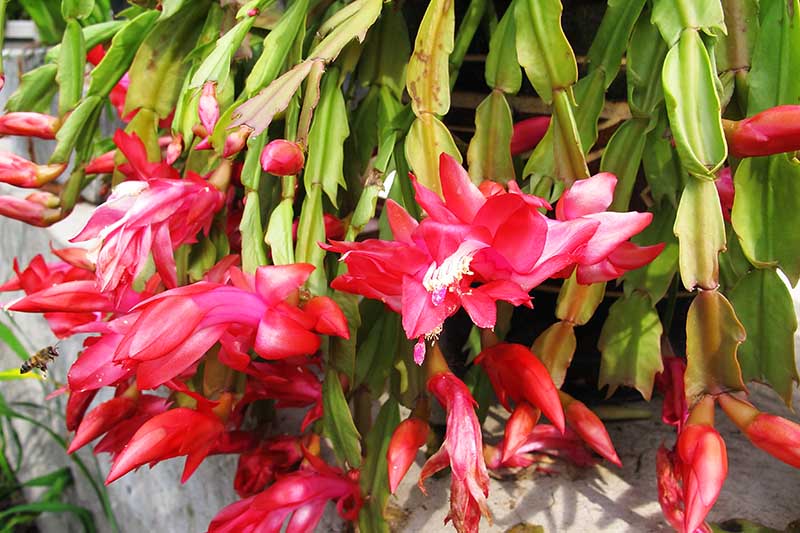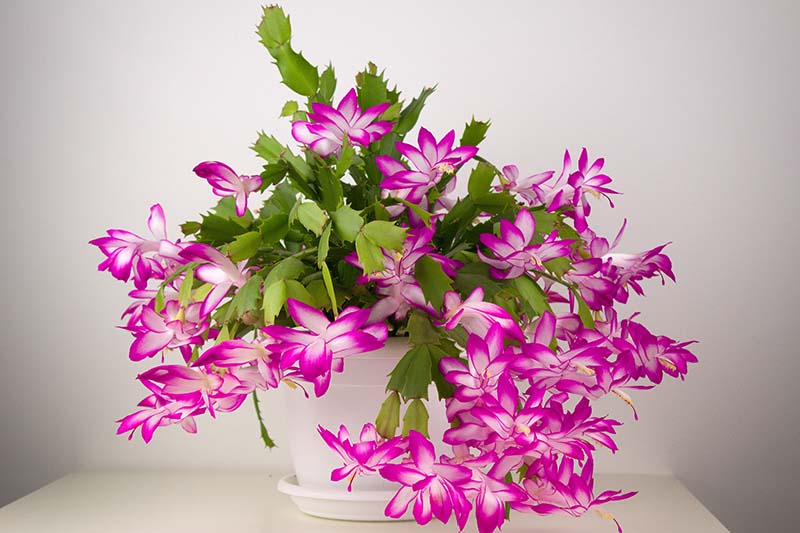These conditions replicate its natural setting beneath rainforest canopies in South America, where it grows as an epiphyte attached to trees and rocks. In our guide to growing Christmas cactus, we talk about how to cultivate this easy-care houseplant. We link to vendors to help you find relevant products. If you buy from one of our links, we may earn a commission. Here’s what’s in store: With an understanding of why the stem segments of a Christmas cactus may shade to yellow, you can evaluate it and take action. Schlumbergera are characterized by fleshy segmented stems, called cladodes, that are often mistaken for leaves. New growth may start out red and gradually turn green.
When a plant’s color changes, something’s up. Yellow coloration typically results from five possible causes, or a combination of one or more of the following: inappropriate light, inadequate moisture, nutrient deficiencies, pests and disease, and poor drainage. Let’s take a look at each:
1. Inappropriate Light
In their natural habitat, Schlumbergera plants grow in the dappled sunlight that penetrates a rainforest canopy. At home on a sunny windowsill, it may be exposed to direct, rather than indirect sunlight.
This overexposure may cause the green stems to look pale and yellowish. When it’s exposed to intense sunlight, a Christmas cactus may turn purple. Even in winter, direct sunlight through window glass can be too intense for this tropical cactus, especially if the window has a southern exposure. You can avoid bright light by placing the pot near a north- or west-facing window. In the event of overexposure, the potting medium may dry out as well, causing dehydration, another cause of yellowing, which we discuss below. Place the cactus in a sink or the bathtub. Rinse its leaves, water it well, let it drain, and move it to a more amenable location with indirect sunlight. The opposite problem is too little light. Unless you are trying to induce dormancy by simulating the long nights of winter to make your Christmas cactus bloom, you can’t keep it in a dark room that doesn’t even get the morning sun. Instead of being vivid green, it will turn pale and yellowish because without sunlight, the plant lacks the chlorophyll needed for photosynthesis, the conversion of the sun’s energy to food. The rainforest canopy is not a dark place, but a sun-dappled one. Epiphytes like Schlumbergera use their roots to help position themselves for optimal light exposure. Don’t deprive yours of it.
2. Inadequate Moisture
This is a tricky one. Foliage may discolor as a result of the plant being either underwatered or overwatered.
You may have noticed this in your yard in summertime. During a dry spell, tree foliage sometimes turns yellow and drops, making it look as if fall has arrived early. And conversely, a rainy spell often causes flower and vegetable foliage to turn yellow and wilt. If the problem is water-related, a close examination of your plant should reveal the issue. Is it dry and dropping stem segments, or is it wilting and soggy? For an overly dry pot, ask yourself if there’s too much sunlight, and if you’re remembering to water when the top one to two inches of potting medium feel dry. Give a dry plant a thorough watering, let it drain, and place it in a location that receives indirect sunlight. On the flip side, does your pot lack a drainage hole, are you overwatering, and/or is your cactus in semi-darkness for much of the day? If one or all of these are true, repot in a well-draining container, don’t water unless the top one to two inches of potting medium feel dry, and relocate to indirect sunlight. Both underwatering and overwatering can invite pests and disease, as well as lead to death via dehydration or rotting. If neither dryness nor oversaturation seems to be the cause, consider another possible reason.
3. Poor Drainage
What goes hand in hand with watering? Proper drainage. When moisture pools at the bottom of the pot, roots can become waterlogged and unable to take up nutrients. This can cause stem segments to wilt and turn pale green to yellow, and the roots may rot, causing further wilting and discoloration from fungal infection.
Avoid drainage issues by making sure your container has at least one drainage hole in the bottom. The potting medium should contain fine gravel, pumice, or sand to promote root aeration and drainage. You may take an extra step and add a layer of stones at the bottom of the container to further efforts to inhibit water pooling which can result in rotting. When you water, don’t leave the pot resting in a dish of water that blocks air from the drainage hole. If you have a dry house and need to set your tropical plants on a pan of wet gravel to maintain ambient moisture, be sure that the water level in the pan is no higher than the gravel, to allow air to reach the drainage holes of the containers.
4. Nutrient Deficiency
With high quality potting medium, and periodic feeding with a well-balanced liquid houseplant fertilizer per package instructions, you are unlikely to see discoloration as a result of a nutrient deficiency. However, there are several ways that a plant may become malnourished and exhibit yellowing. One is if it grows in an organically-poor potting medium and has never received supplemental nourishment in the form of fertilizer. Another is if it is severely rootbound and unable to properly take up nutrients from the potting medium. And finally, the potting medium in the pot of an older cactus that has never been repotted may be depleted of its nutritional elements. Repot a plant that may be receiving inadequate nutrition in fresh, organically-rich potting medium, and feed per package instructions with a quality liquid houseplant fertilizer or worm compost.
5. Pests and Disease
Discoloration may also be a result of tissue damage caused by sap-sucking pests like aphids, mealybugs, red spider mites, soft brown scale, thrips, and whiteflies, as well as soil-borne fungus gnats. All are common to Schlumbergera.
For further information on each of them, please consult our article on Christmas cactus pests. These bugs are often vectors, or carriers, of diseases that may also cause discoloration. One disease, called Impatiens Necrotic Spot Virus (INSV) is transmitted by thrips, so it is important to address pests or risk extensive damage. A tell-tale sign is yellow spots ringed with brown, dead tissue. There is no cure for INSV, and affected plants must be discarded in the trash. Other sources of discoloration are stem and root rotting caused by fungi that thrive in wet potting mix and feed on roots. By the time subsurface trouble is visible as yellow leaves and wilting, the damage may be irreversible. To treat rotting, unearth the cactus and rinse it clean, roots and all. Cut off and discard mushy, malodorous stems and roots. Salvage what you can and allow the remaining foliage and roots to dry before repotting in fresh potting mix. It’s easy to forget that a Schlumbergera is not a desert cactus, and err on the side of too much light and too little water, which causes it stress. Or to be too generous with the watering can and expect it to tolerate wet feet.
And while it likes snug quarters, ignoring extremely bound roots that can’t absorb food is likely to set it on edge. But the final insult is defoliating pests above and rampant root rotting disease below. Just as a yellow traffic light signals caution, a plant’s discoloration tells us to react, evaluate the environment and care regimen, and proceed appropriately. Have your plants suffered from yellowing stem segments? What did you do about it? Let us know in the comments section below! If you found this guide informative and want to increase your knowledge of Christmas cacti, read these guides next:
What Is the Best Potting Mix for Christmas Cactus? Why Do I See Hair-Like Roots on My Christmas Cactus? What To Do About Woody Stems on Your Christmas Cactus
© Ask the Experts, LLC. ALL RIGHTS RESERVED. See our TOS for more details. Uncredited photos: Shutterstock.
